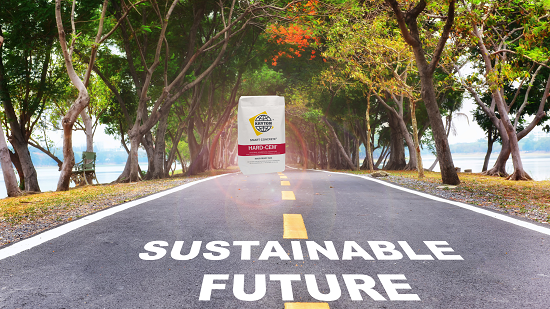 Wednesday, October 2, 2024
Wednesday, October 2, 2024  Wednesday, October 2, 2024
Wednesday, October 2, 2024 
With all this industry focus on sustainable construction, there’s now a greater need to find construction materials that can contribute. After all, AEC professionals want to ensure their structures last as long as possible with the smallest carbon footprint.
Of course, not all products are capable of helping them reach that goal. It can be a challenge finding the right solution that can balance a project’s need for aesthetics, service life extension, and carbon reduction.
To help them meet this challenge for concrete structures, we offer our Hard-Cem admixture. It’s able to extend the life of structures without adding to the carbon emissions of a project and has been proven to do so. To show how that’s possible, we’ve turned to Alireza Biparva, one of our research and development department’s technical directors.
To help comprehend this question, we must first answer a couple more questions. First, when concrete surfaces are prone to erosion, what is the impact on the sustainability of a project that does not employ materials like Hard-Cem? Then, we need to clarify the following question: what solutions are available to improve wear resistance? Ultimately, these will illustrate how Hard-Cem outperforms its competitors in terms of reducing environmental impact.
Let’s start with answering the first question.
Erosion and abrasion can cause significant wear and material loss over time due to the inherent weakness of cement paste, lowering the service life of concrete.
Concrete that is resistant to erosion and abrasion saves resources, minimizes waste, and reduces the environmental impact of repair and replacement. Hence, to maximize the service life and minimize environmental impacts, it is vital to have a reliable solution to protect concrete structures from erosion and abrasion.
Several products and techniques have been promoted as solutions, including increasing concrete strength, applying dry shake hardeners and liquid densifiers, and using Hard-Cem as an integral hardening admixture.
Getting into the specific details of comparing the environmental benefits of Hard-Cem versus its competitors may be beyond the scope of this interview.
But in brief, increasing the strength of the concrete results in the use of more cement, which is a significant source of CO2 emissions when manufactured.
And both dry shake hardeners and liquid densifiers have environmental drawbacks. The main one is that they don’t have a noticeable effect on abrasion reduction, durability, and thus, the sustainability of structures.
In contrast, Hard-Cem can provide environmental benefits from the extraction of raw materials until the final disposal. Hard-Cem’s raw materials are 100% reclaimed industrial material. It is added to the concrete as an admixture, eliminating the need for application, and reduces health and safety liability. Increasing the service life of concrete structures through improved durability brings evident benefits in optimizing resources, decreasing repairs, and improving sustainability. Finally, Hard-Cem-treated concrete can be recycled at the end of a structure’s service life.
Keep reading this interview on kryton.com